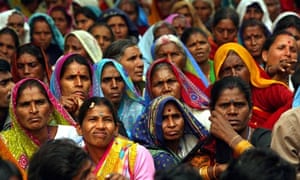According to the College Board's Course and Exam Description, "A fitting test of overall student understanding could be to ask students to identify the most significant developments within each theme as it applies to each period of the course" (p. 106). With that in mind, the following activity uses digital timelines to review thematic content across the six time periods of the course. It is intended as a review, not as an exhaustive encyclopedia of content. Each theme is broken down into a few salient topics to better focus the review. To get the most out of this, you should download and complete the Graphic Organizer for each timeline and then test your knowledge with the online quiz. Each timeline has links to enrichment materials.
 |
Theme 1: Interaction Between Humans and the Environment | ||
| Migrations | Graphic Organizer | Digital Timeline | Review Quiz |
| Tools, Disease, and the Environment | Graphic Organizer | Digital Timeline | Review Quiz |
|
|
|||
 |
Theme 2: Development and Interaction of Cultures | ||
| Belief Systems | Graphic Organizer | Digital Timeline | Review Quiz |
| Cultural Exchanges and Syncretism | Graphic Organizer | Digital Timeline | Review Quiz |
|
|
|||
 |
Theme 3: State Building, Expansion and Conflict | ||
| Political Forms and State-Building | Graphic Organizer | Digital Timeline | Review Quiz |
| Expansion and Political Legitimization | Graphic Organizer | Digital Timeline | Review Quiz |
 |
Theme 4: Creation, Expansion, and Interaction of Economic Systems | ||
| Economic Production and Labor Systems | Graphic Organizer | Digital Timeline | Review Quiz |
| Networks of Communication and Exchange | Graphic Organizer | Digital Timeline | Review Quiz |
|
|
|||
 |
Theme 5: Development and Transformation of Social Structures | ||
| Social Structures and Transformations | Graphic Organizer | Digital Timeline | Review Quiz |
| Gender Structures | Graphic Organizer | Digital Timeline | Review Quiz |
According to the College Board's Course and Exam Description, "A fitting test of overall student understanding could be to ask students to identify the most significant developments within each theme as it applies to each period of the course" (p. 106). With that in mind, the following activity uses digital timelines to review thematic content across the six time periods of the course. It is intended as a review, not as an exhaustive compendium of content. Each theme is broken down into a few salient topics to better focus the review.
 |
Theme 1: Interaction Between Humans and the Environment | ||
| Migrations | Digital Timeline | ||
| Tools, Disease, and the Environment | Digital Timeline | ||
|
|
|||
 |
Theme 2: Development and Interaction of Cultures | ||
| Belief Systems | Digital Timeline | ||
| Cultural Exchanges and Syncretism | Digital Timeline | ||
|
|
|||
 |
Theme 3: State Building, Expansion and Conflict | ||
| Political Forms and State-Building | Digital Timeline | ||
| Expansion and Political Legitimization | Digital Timeline | ||
 |
Theme 4: Creation, Expansion, and Interaction of Economic Systems | ||
| Economic Production and Labor Systems | Digital Timeline | ||
| Networks of Communication and Exchange | Digital Timeline | ||
|
|
|||
 |
Theme 5: Development and Transformation of Social Structures | ||
| Social Structures and Transformations | Digital Timeline | ||
| Gender Structures | Digital Timeline | ||
These videos are required content and will be assigned in class as we approach the topics. When viewing them, pay attention not only to the questions below but also understand how the content serves to illustrate the Key Concepts given at the top of each video.
Video 1:The Bolshevik Revolution
Important! You MUST log in to your Playposit account before you watch this video.
You need to know the following vocabulary before you begin the video:
Provisional Government
Bolsheviks
Nicholas II
Vladimir Lenin
Video 2: The Crisis of Democracy
Key Concept 6.2.IV.B. Sources of global conflict varied and included the economic crisis engendered by the Great Depression.
Key Concept 6.2.IV.A. Governments used a variety of strategies to mobilize their people and resources.
1) Why did many lose faith in democracy in the 1930s? What is evidence that they did?
2) What was the relationship between Germany's situation in the 1920s and 1930s and the rise of the Nazi Party?
3) What drove Hitler's popularity? What methods did the Nazi party use to appeal to their population?
Video 3: WWII, From the Rape of Nanjing to Nuremburg
Key Concept 6.2.III.C. The proliferation of conflicts led to the Holocaust during WWII and other forms of genocide or ethnic violence.
Key Concept 6.2.IV. Military conflicts occurred on an unprecedented scale.
Video 4: Medical Advances
Key Concept 6.1.I. Researchers made rapid advancements in science that spread throughout the world, assisted by the development of new technology.
1) What highlighted the need for medical research?
2) What did researchers specifically discover?
3) What was a major consequence of this discovery?
Video 4








